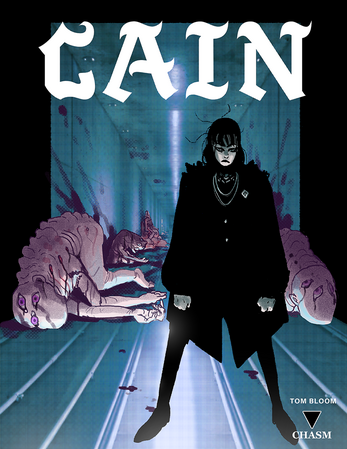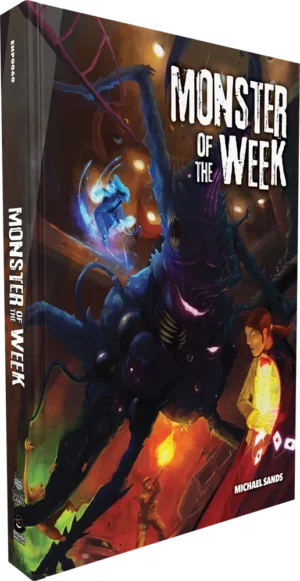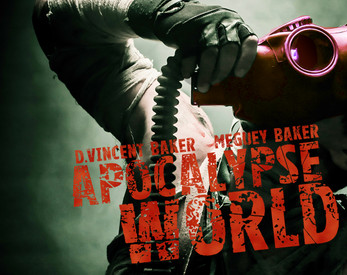Cain Dark Fantasy; Mature; Exploration-Driven; Narrative-Driven; Character Customization; Psychological
Cain is a dark fantasy tabletop roleplaying game focused on mature themes, exploration-driven narratives, and deep character customization. Players take on the roles of exorcists, psychic soldiers employed by a shadowy organization to hunt down manifestations of human trauma known as SINS. The game emphasizes the psychological toll of this work, the complex moral choices players face, and the unique blend of investigative and combat elements, drawing inspiration from sources like Chainsaw Man, Jujutsu Kaisen, and Evangelion. Its core mechanics, particularly the risk die and category system, promote tension and meaningful character progression. Cain's unique aesthetic, described as 'stickercore', combines lo-fi manga, visual collage, and barber beats influences.
Theme and Setting
Cain plunges players into a dark urban fantasy setting where humanity is plagued by a psychic sea born from the darkest aspects of the human soul. When this psychic energy runs rampant in sensitive individuals, it births terrifying supernatural monsters called SINS. The setting is dominated by CAIN, a global supranational shadow organization dedicated to hunting and eliminating these SINS. Players embody exorcists, psychic supersoldiers who are themselves nascent monstrosities, struggling against their own expanding powers. The game explores themes of trauma, dehumanization, and the ethical implications of fighting fire with fire, forcing players to confront the crushing horror of bureaucracy and the psychological cost of their work. The aesthetic, drawing heavily from lo-fi manga, visual collage, and barber beats album covers, further enhances the game's unsettling atmosphere.
Core Mechanics and Rules
Cain employs a lightweight, narrative-driven system with mechanics that emphasize player agency and collaborative storytelling. The game uses dice pools where players roll multiple dice, aiming for successes. A crucial element is the Risk Die, rolled by the Admin (Game Master) to determine the consequences of risky actions, ensuring tension even in successful scenarios. This mechanic helps avoid GM paralysis and reinforces the horror-shonen mindset. Character progression is managed through the Category system, a simple ranking that governs the strength, reach, and speed of powers. This allows for meaningful growth without complex calculations. Investigation plays a vital role, with clues gathered during the investigative phase providing advantages during climactic confrontations with SINS. The game balances investigative elements with conflict scenes, where talismans represent progress toward specific goals, including executing monsters. Blasphemies are psychic powers of the Exorcists.
Uniqueness of Cain
Cain stands out due to its unique blend of narrative and mechanical elements. The Risk Die mechanic ensures that every action carries consequences, maintaining tension regardless of player skill. The Category system provides a streamlined approach to character progression. The game's focus on the psychological toll of exorcism, with characters risking becoming the very monsters they hunt, adds a layer of depth. Its aesthetic, described as "stickercore," which integrates memos and ID cards into the book's design, creates a distinctive visual identity. The game deliberately blurs the lines between the real world and the fiction. The narrative is exploration and investigation-driven, rather than combat-focused, setting it apart from more traditional RPGs. Cain uses similar systems to Blades in the Dark, but innovates on those systems with mechanics like the Risk Die.
Target Audience and Player Experience
Cain is targeted towards mature players interested in dark fantasy, horror, and psychological themes. It appeals to those who enjoy narrative-driven experiences with meaningful choices and complex moral dilemmas. The game is well-suited for players who appreciate character customization and are drawn to the aesthetic of lo-fi manga and visual collage. Players can expect a tense and engaging experience that combines investigative gameplay with climactic battles against terrifying monsters. The gameplay loop emphasizes collaboration and creative problem-solving, encouraging players to work together to uncover the mysteries behind the SINS they hunt. Because the game centers around themes like trauma and dehumanization, it could be best enjoyed by those who are comfortable exploring such sensitive topics.



